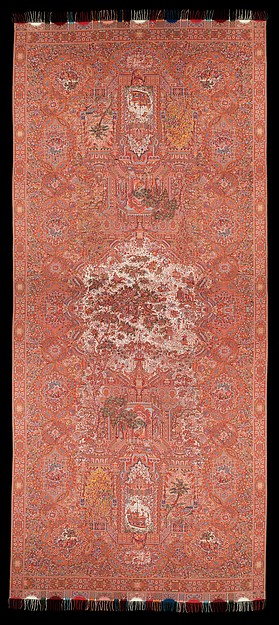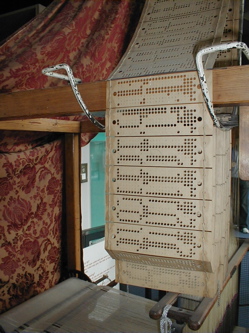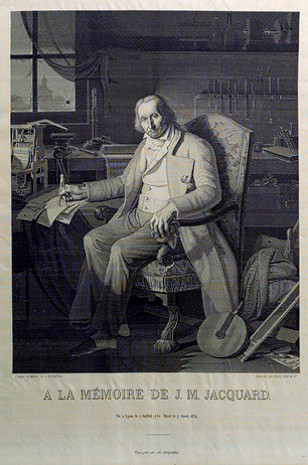| I’m not alone at Pi Towers (hi Lorna! Hi Rachel!) in being a textiles nerd. There’s a 200-year-old cushion made of strips of worn-out Regency clothes (which nobody is allowed to sit on) in my living room; Mandarin sleeves I’ve rescued from rummage bins in Hong Kong and framed on the walls, and a rotation of vintage wedding kimonos and obis that hang up at the end of the hall. I have a theory about textile art being considered domestic, female art – and therefore, for cultural reasons I don’t care for very much, deprecated in comparison with other sorts of art, and a hell of a lot cheaper per square foot than paintings or prints in frames. If you’ve got a big wall to decorate, you could do a lot worse than hitting eBay and wallowing in kimonos. What’s all this got to do with Raspberry Pi? In case you hadn’t already noticed, I am also a computing history nerd. Last weekend I spent several hours in the Fashion Museum in Bath, thinking tranquil thoughts about Spitalfields silk, Jacquard looms, and the way some of these beautiful textiles relate directly to the history of programming. The Jacquard process for weaving was invented in the early 1800s; and we get excited about them because Jacquard looms were the very first programmable machines used in manufacturing.  This shawl, from the collection of the Metropolitan Museum in New York, was woven in 1840 on a Jacquard loom. Click through for a zoomable image; the detail is phenomenal. Punchcards were threaded together and fed into the loom, each card full of holes representing one line of weaving. It was a flexible system: your chain of cards could be as long or as short as was needed, and to weave a different pattern on the loom, you could simply swap out the set of cards. Imposing that flexibility on a mechanical system was a completely novel concept, and those punch cards were a first step on the road to what became the computer programming that all those of you with Raspberry Pis are familiar with. (Charles Babbage used the Jacquard punch card concept around forty years after the invention of the Jacquard process to store programs in the Analytical Engine – and they’re still not obsolete. Those American voting machines that cause so much controversy were still employing punch cards in the 2012 election.)  Punch cards in use on a Jacquard loom It can be hard to visualise the relationship between the holes in the cards you can see above, and the individual lines that create the pattern on the brocade you can see next to them. So Macclesfield Silk Museum (which I have only just found out about, and am going to make a beeline for next time I’m in Cheshire) put a Raspberry Pi to work to make this demonstration model for museum visitors. Today, textile professionals can buy specialised software for designing and producing Jacquard fabrics: a direct line of descent from Joseph Marie Jacquard’s two-century old innovation. (Check out this blog post from Florence, where you can see some modern examples of fabrics woven using modern Jacquard software.)  Joseph Marie Jacquard – a portrait woven in very fine silk on a Jacquard loom in 1839. 24,000 punch cards, each with 1050 positions, were used to weave this portrait, which is in the collection of the Science Museum in London. Next time you’re out shopping for curtain fabric, or buying intricately woven cushion covers, step back for a moment and think about the computing history you’re holding in your hands. Computing’s everywhere. |
A Semi-automated Technology Roundup Provided by Linebaugh Public Library IT Staff | techblog.linebaugh.org
Friday, November 14, 2014
Jacquard looms, and a Pi simulator
Subscribe to:
Post Comments (Atom)
No comments:
Post a Comment